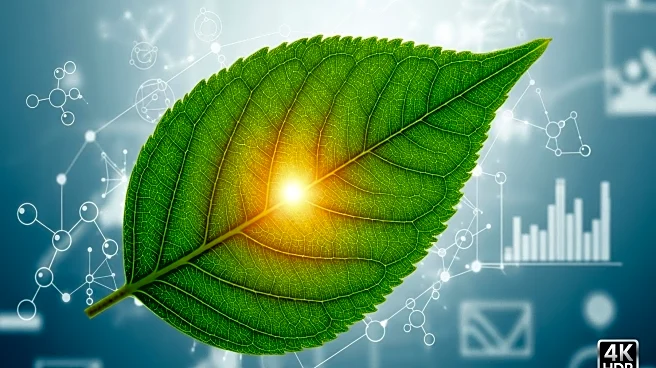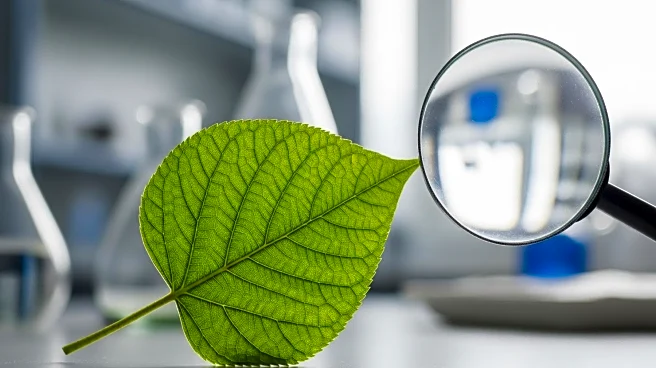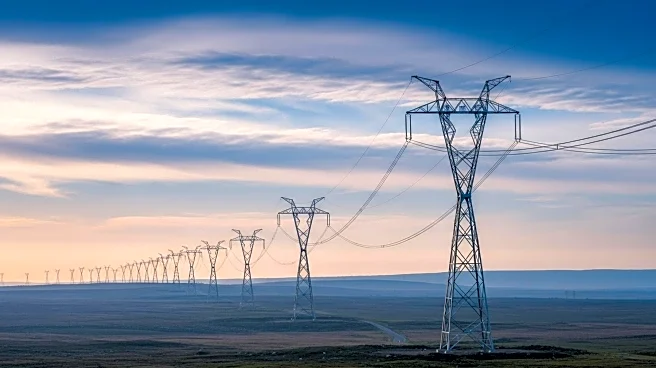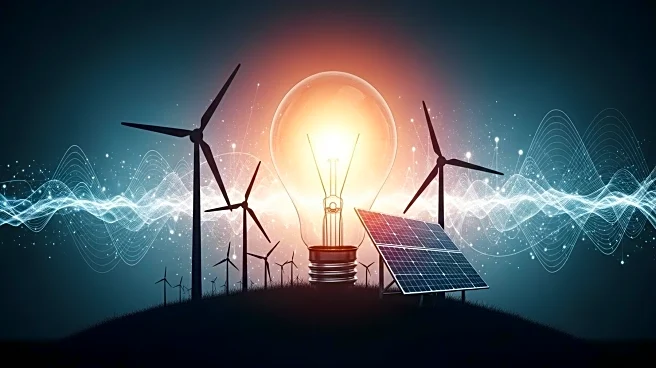What's Happening?
Researchers from the Indian Institute of Science and the California Institute of Technology have resolved a longstanding puzzle concerning the initial stages of photosynthesis. This process, essential for life on Earth, involves the capture of sunlight by plants, algae, and certain bacteria to produce oxygen and energy-rich compounds. The study, published in the Proceedings of the National Academy of Sciences, explains why electron movements occur exclusively through one side of a key protein-pigment structure in Photosystem II (PSII). Despite structural symmetry between the D1 and D2 branches of PSII, only the D1 branch is functionally active due to lower energy barriers for electron transfer. This discovery could lead to the development of efficient artificial systems that mimic natural photosynthesis, such as synthetic leaves and solar-based fuel technologies.
Why It's Important?
Understanding the intricacies of photosynthesis is crucial for advancing renewable energy technologies. The findings from this study could significantly impact the design of artificial photosynthetic systems, potentially leading to more efficient solar energy conversion methods. By replicating the natural process, scientists aim to create sustainable solutions for energy production, reducing reliance on fossil fuels and contributing to environmental conservation. The ability to harness solar energy more effectively could benefit industries focused on clean energy and drive policy changes towards greener practices.
What's Next?
The research team suggests that modifying components within Photosystem II could enhance electron flow, offering pathways to improve artificial photosynthetic systems. Future studies may focus on tweaking the protein environment or swapping pigments to overcome existing energy barriers. These advancements could lead to breakthroughs in solar energy technologies, influencing both scientific research and commercial applications. Stakeholders in the renewable energy sector may closely monitor these developments, potentially investing in new technologies that emerge from this foundational research.
Beyond the Headlines
The study not only addresses a fundamental scientific question but also opens up discussions on the ethical and environmental implications of artificial photosynthesis. As researchers explore ways to replicate natural processes, considerations around biodiversity, ecosystem balance, and the long-term impacts of synthetic systems on the environment will be crucial. The integration of such technologies into existing energy infrastructures may also prompt debates on regulatory frameworks and the role of innovation in sustainable development.











